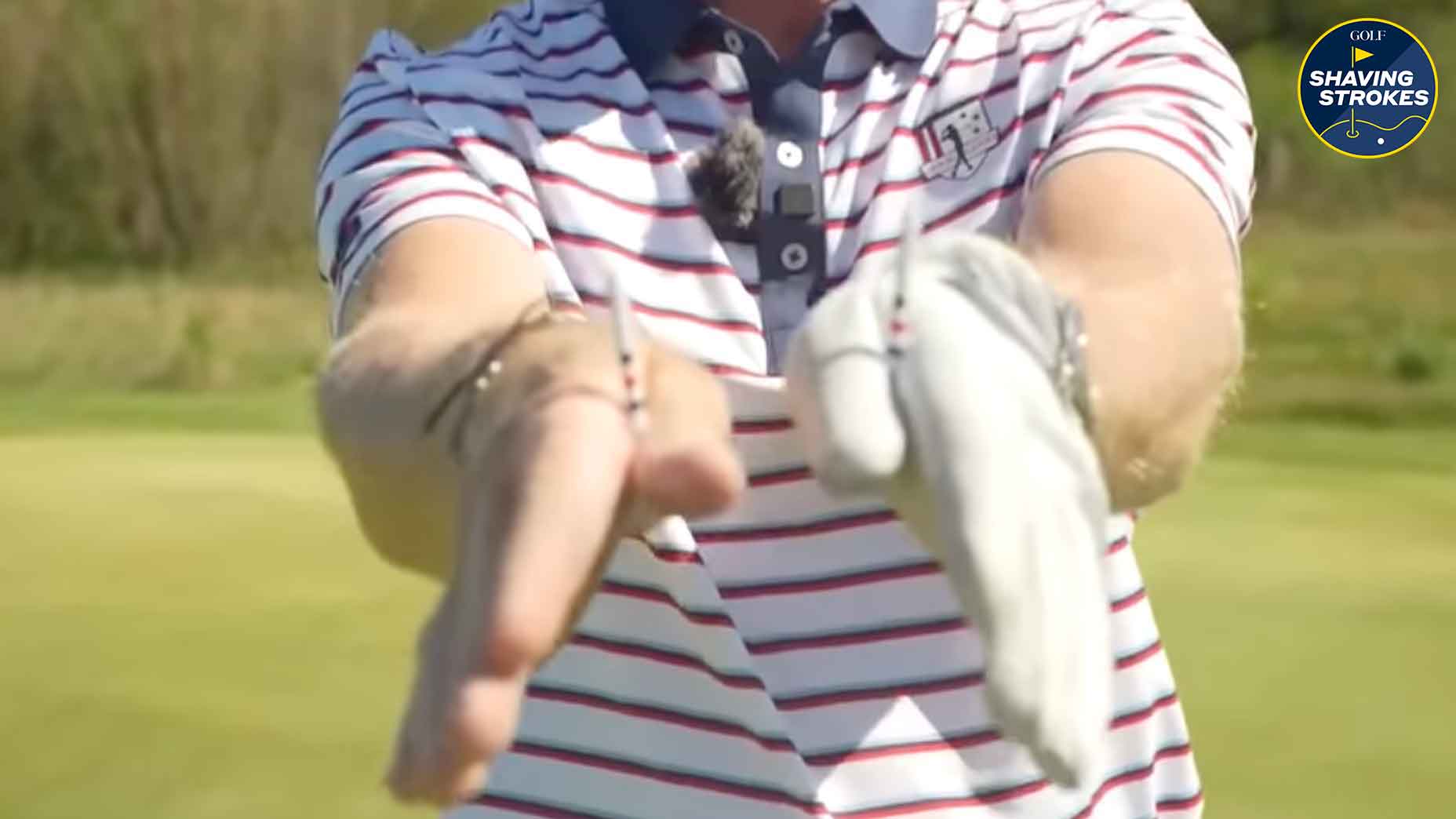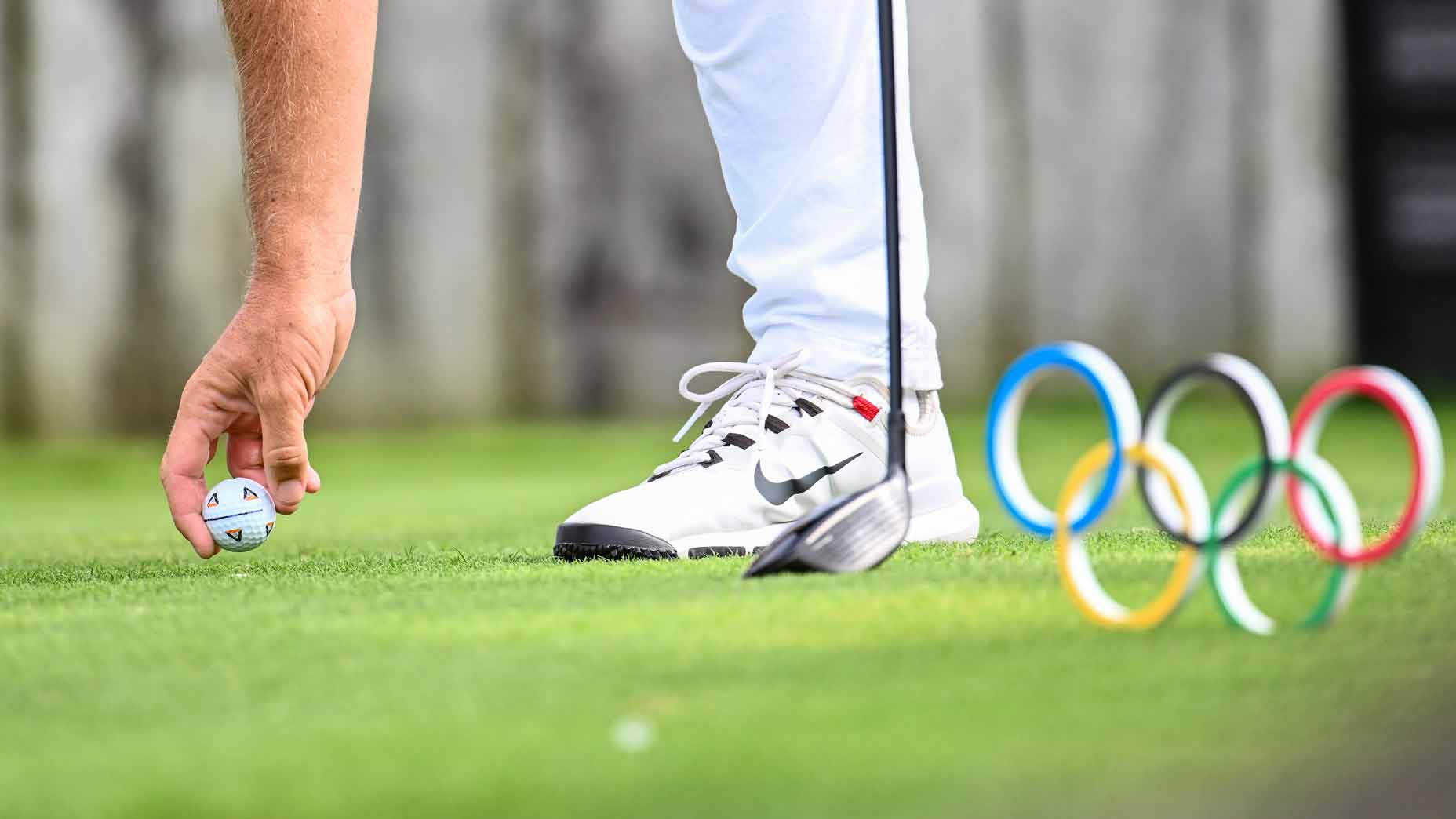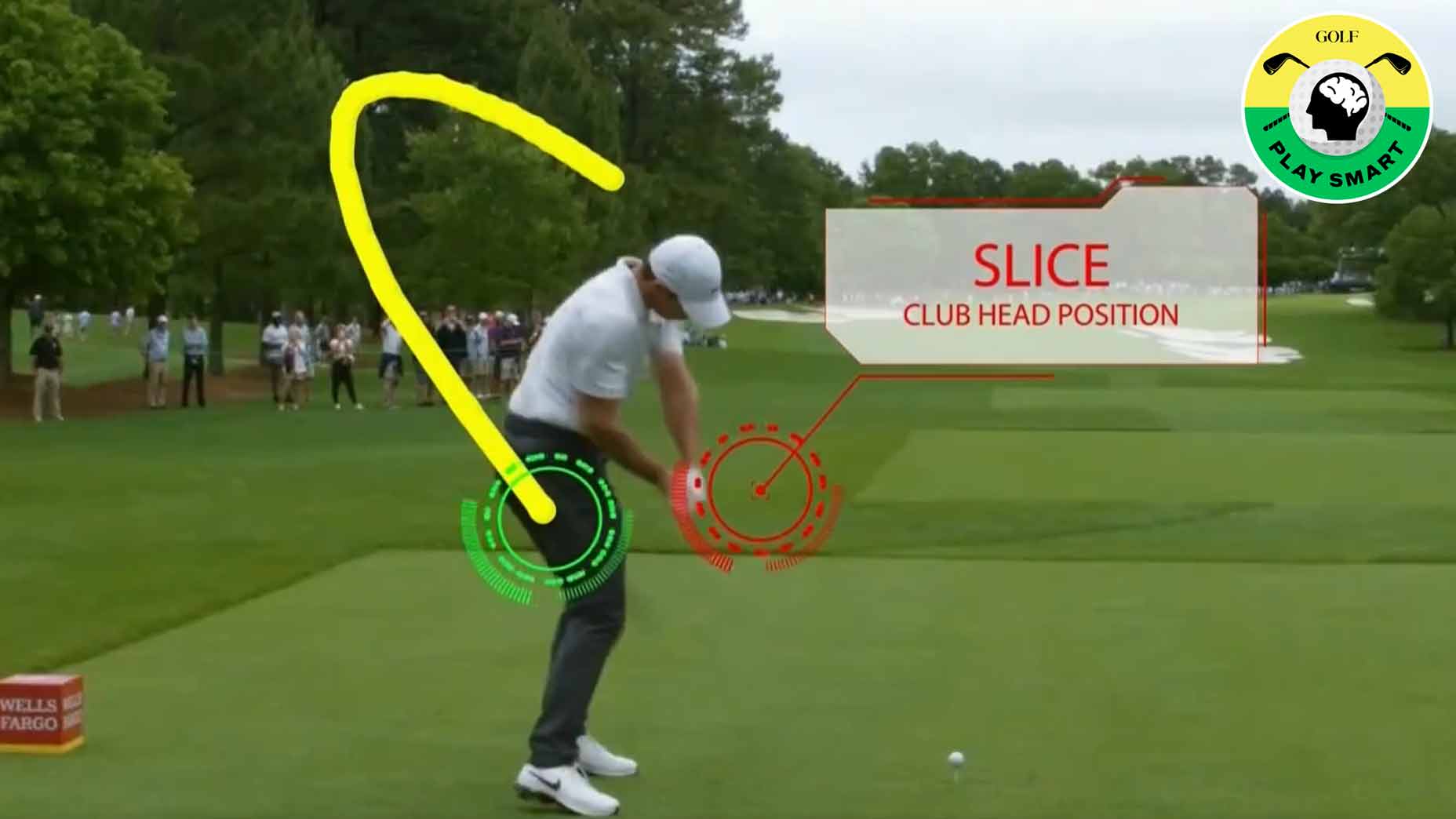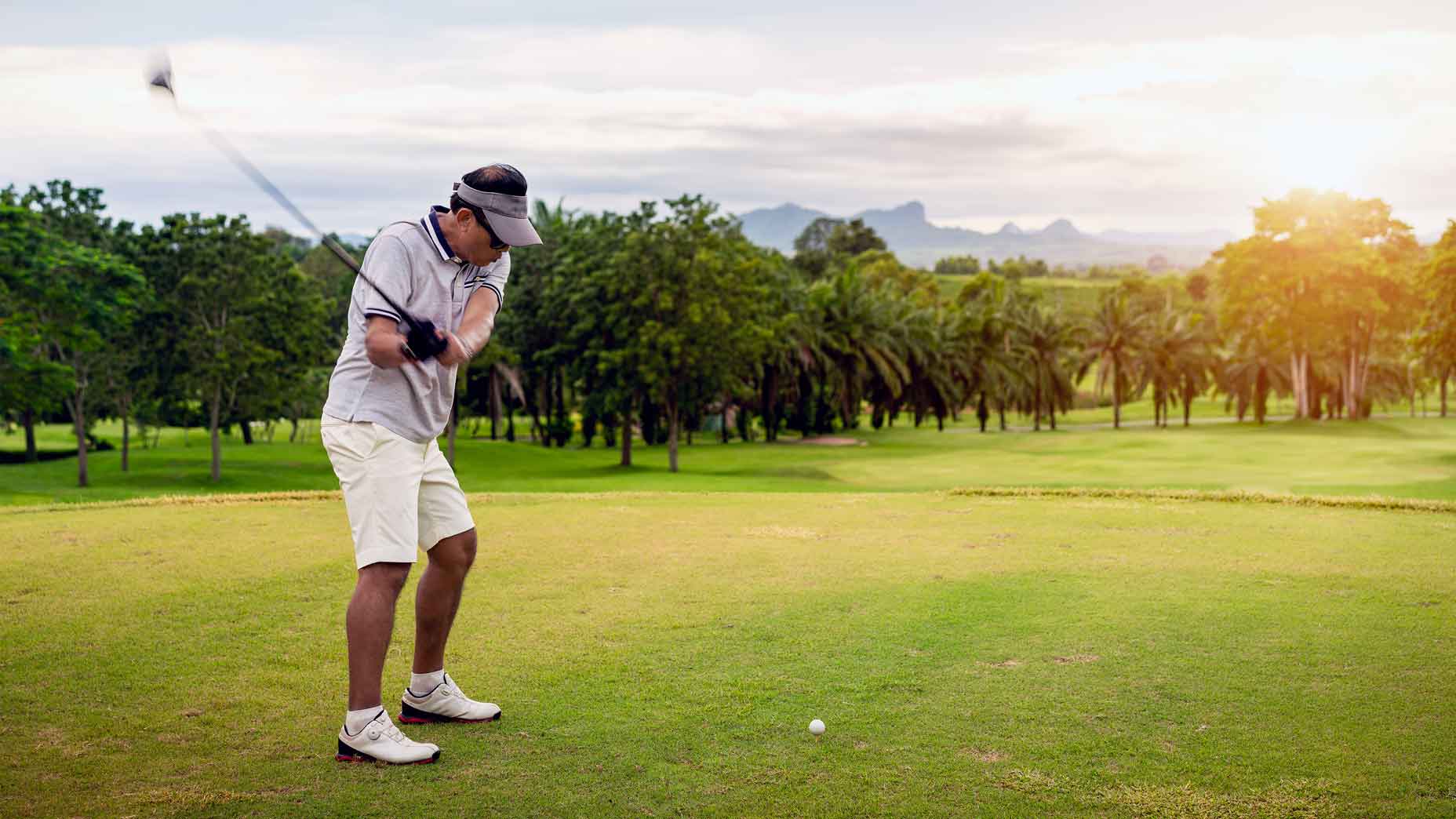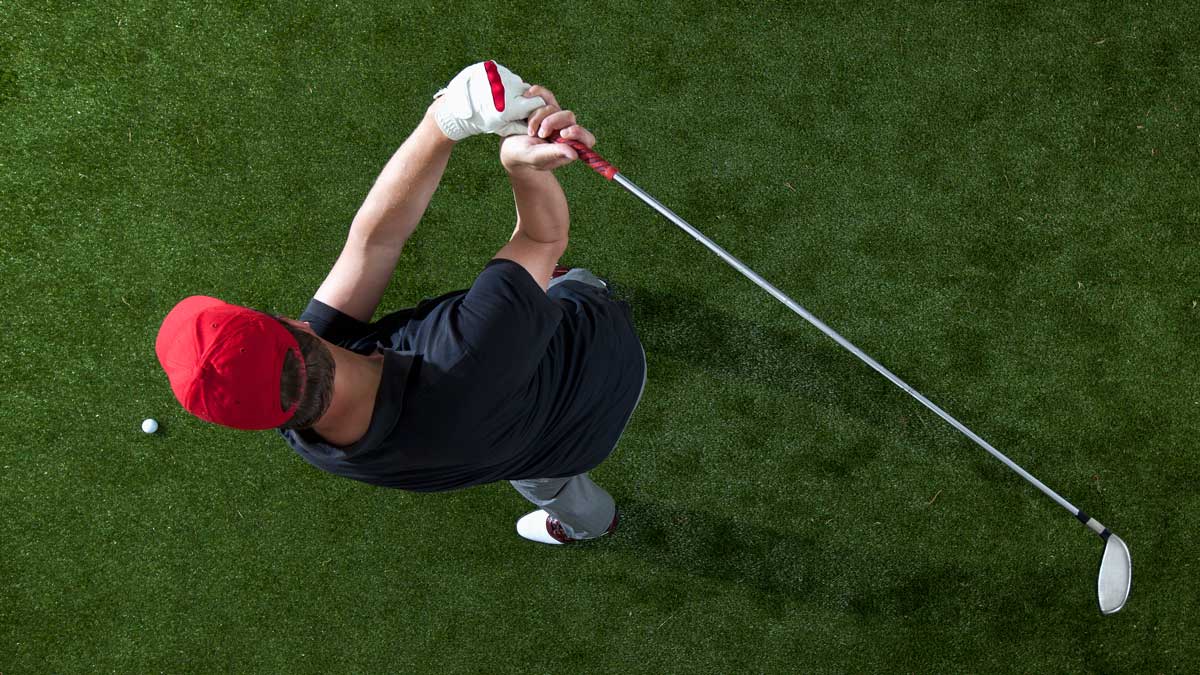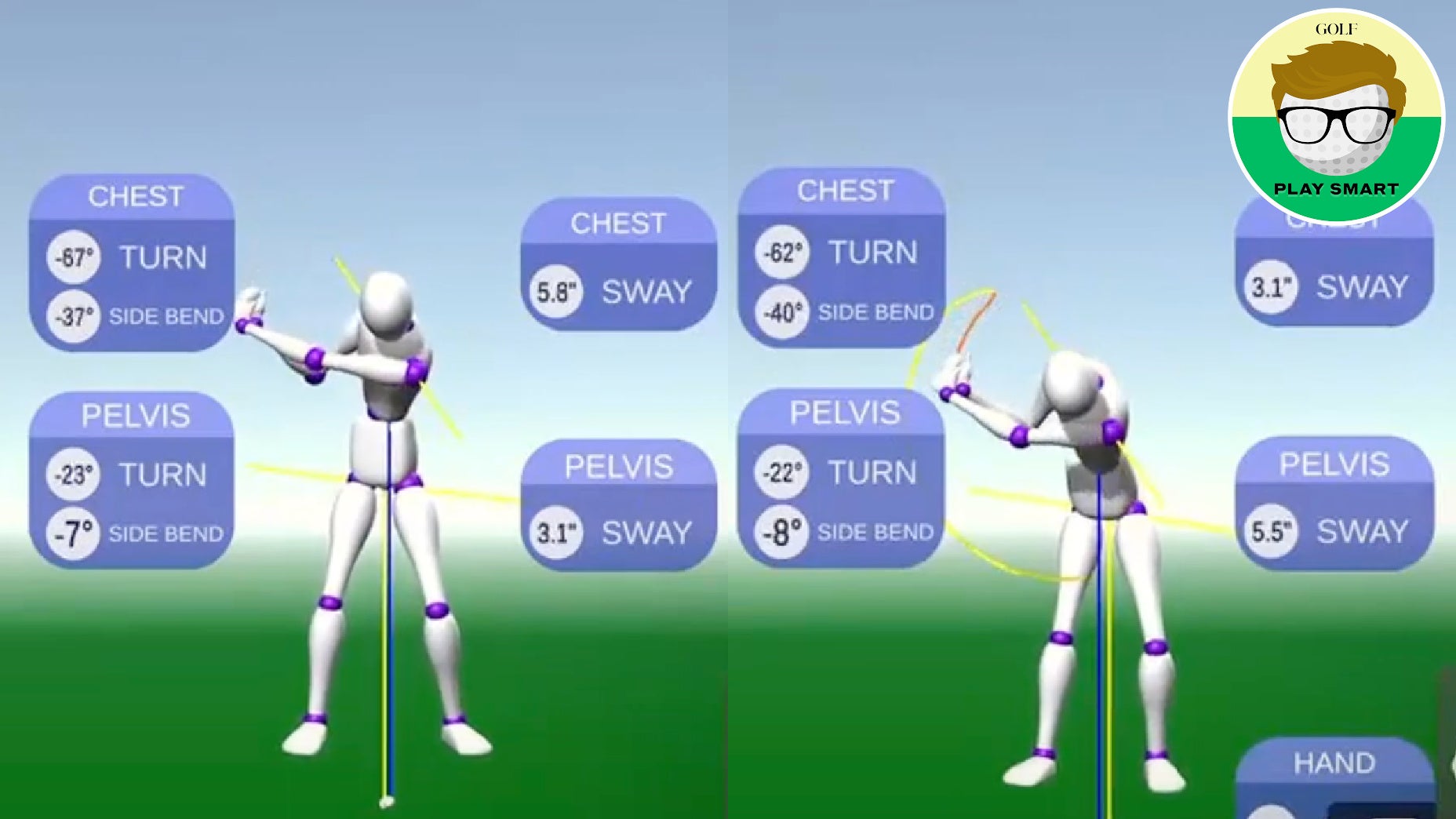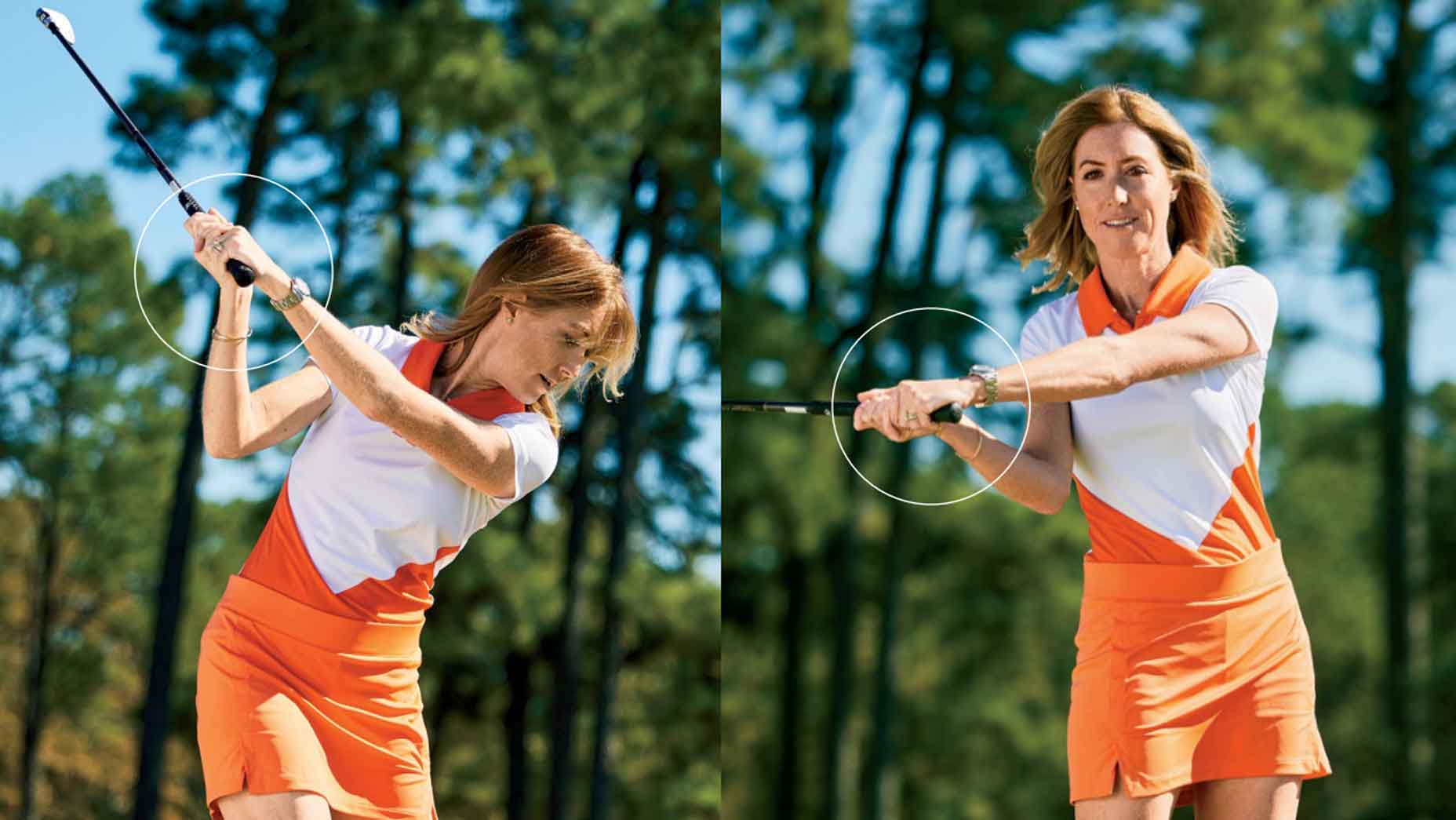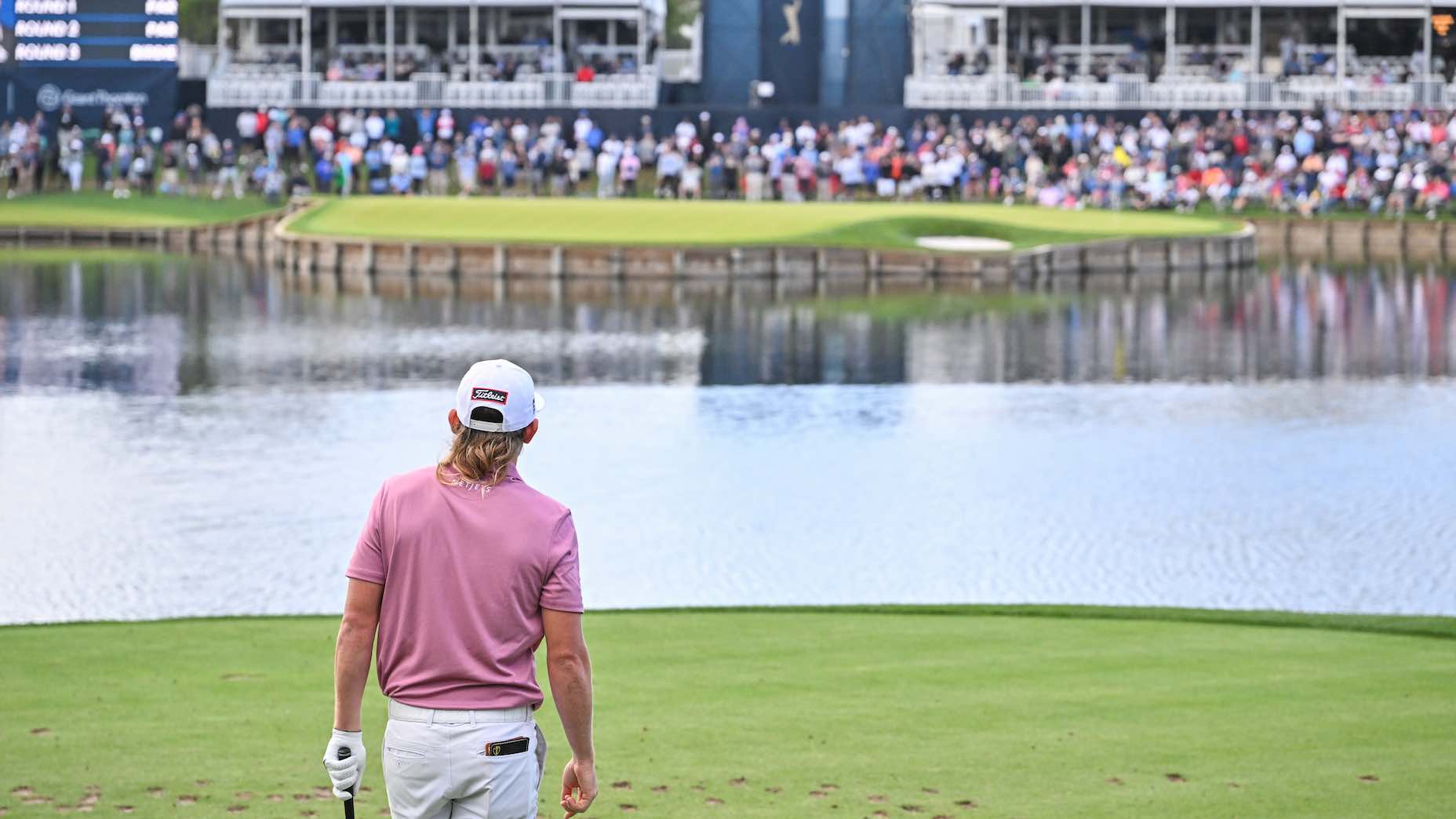10 reasons why you keep slicing the golf ball
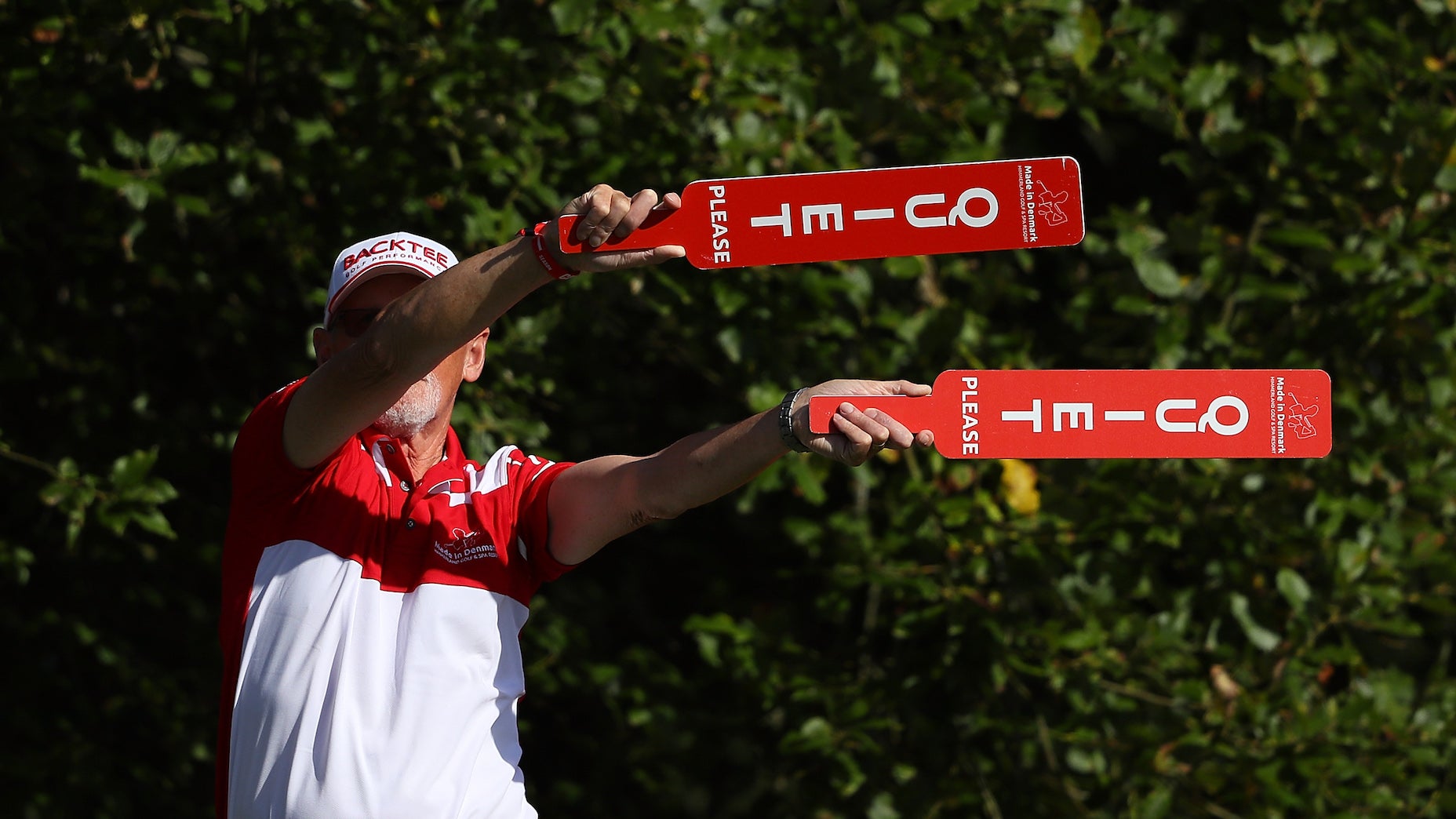
Nothing worse than a big, boomerang slice ruining your round.
(GETTY)
There may be no greater power loss than a slice. The ball sometimes starts out ok and then makes this depressing curve, robbing you of all of your potential distance and power. You can fix that slice, but it starts with understanding what causes it in the first place…
1. Open club face
The most common cause of a slice is an open club face. This open club face will give you contact that isn’t square and often feels like a “side swipe.”
The most common cause of an open club face is an incorrect grip as your hand position will directly reflect in the face.
You can make this adjustment by turning one of both of your hands away from your target. In other words, if you were a right handed golfer, you would rotate your hands to the right. When making this adjustment, often times it needs to be adjusted more than you think.

2. Thumbs too on-top of the grip
One of the more common misconceptions when it comes to a “weak” grip causing an open club face is golfers thinking their thumbs should go straight down the grip.
Your lead hand in particular should appear exactly as it looks when this arm hangs and in most cases that would have the thumb off center and opposing the hand for relaxed support and control.
3. Arms separating from body
One of the great stabilizers of a square club face is to keep your underarms relatively close to your body throughout your golf swing. If on your backswing or your downswing your underarms move away from your body, it is very easy to open the face.
What can help you to do this properly is to understand the the golf swing is circular in nature. If you allow this natural curving to happen as your under arms stay closer to your body throughout your are much more likely to have a square club face that also engages the body in the swing, additionally adding power.
4. Keeping lead arm straight too long
Width and tension in a golf swing can easily be confused. Having width can add power, but if width is misunderstood to mean lead arm stays straight, this can make it really difficult to allow the lead elbow to relax and fold on the forward swing. If the lead arm stays too stiff for too long on your forward swing, this will not only hold the club face open and making the ball slice, but also delays the release of the club face and the speed associated.
One of my favorite drills to combat this is just to take practice swings with your hands split apart. This will almost force your lead arm to relax and fold on your forward swing, helping to deliver a square face at impact.
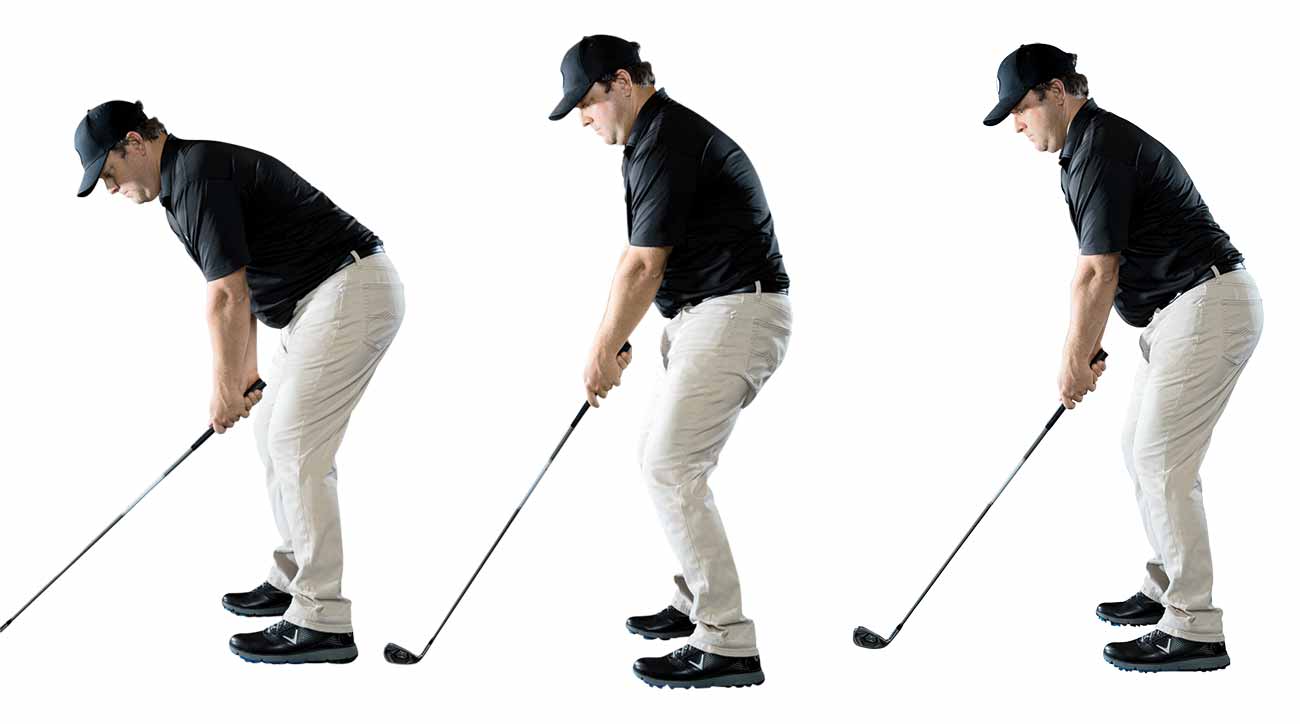
5. Bad posture
Posture that is too upright and now allowing some bend forward from the hip joint will directly affect your ability to make a proper backswing.
Too upright posture will tend to put weight too much back into the heels and this is often accompanied with a back swing that is too upright and lifted and this will produce a slice path on the downswing.
And while all golfers are built differently and postures may vary, allowing some bow from the hips so that the arms can relax and hang will allow you to be balanced and athletic.
Being balanced and athletic will allow you to make a proper backswing for you.
6. Not flexible enough
Some of us are more flexible than others for sure. Often times you will see women with really long backswings and this is often because they tend to be more flexible.
If your flexibility is limited, it can be really difficult to get proper body rotation on your backswing. The rotation of the body on the backswing allows the club to get deep enough on the backswing, therefore allowing the proper downswing path.
If you fall into this category, you can make an adjustment in your set up to make it work today.
You can take your back foot and drop it back into a closed position as if your lower body is a bit turned away from the target. This will immediately create effectively more flexibility and allow you to get the club into a more powerful position in your backswing and help to improve downswing path and more distance.
7. Lefty playing righty (or righty playing lefty)
If you play golf from the side other than your dominant arm this can often lead to a ball that slices. I learned this when working for Mike Adams and it has served many of my students very well.
When you play golf from the side other than your dominant side, that lead arm is so strong is tends to delay natural release of the club face on the forward swing.
You can adjust for this by taking your trail hand grip and turn in under more to be able to see your finger nails. For example, if you are a lefty playing righty, if you take your right hand and turn in under or more to the right, this will allow this hand and arm that aren’t as dominant to have a chance to square the face at impact.

8. Bad ball-position and tilt
Do you hit most of your clubs straight to a nice draw, but slice your driver? I see this all the time and most often it is a ball position issue and understanding how your shoulders should be slightly different with your driver than when the ball is on the ground. When you hit your driver your ball position should be more forward. Ball position that is too far back can cause a slice and/or a pop up.
As your move your ball more forward it is also important that you allow your shoulders to tilt back and away from the target. Your lead shoulder should get higher and your back shoulder lower. This will allow your shoulder line to match your body lines and directly affect your swing path as well as allow the club face to have time to get back to square at impact.
9. Not understanding shoulder line vs. the target line
So little of the time does the club head spend on the target line and golfers who seek to do this will often result in a power-robbing slice.
Going back to the concept that a golf swing is circular. When you make your backswing and your upper body rotates so that your shoulders are turned away from the target.
From the top of your backswing, if you were to allow your arms to swing down your shoulder line, this would produce a great path on the downswing – feeling much like an underhanded throwing motion.
10. Incorrect foot flare
One of the great challenges when studying golf is knowing when information is correct for you. The foot positions that are great for the the tour players, might not be appropriate for anyone with flexibility limitations. A square back foot and a flared forward foot will affect the swing path and produce a slice for many golfers who have limitations.
If you slice the ball try the opposite. Flare your back foot and square your forward foot. This will help increase your ability to rotate back and also slow your body rotation down on your forward swing, both helping with path and sequencing of body and arms.
It is time to stop slicing the ball. At some point, enough is enough and today is that day.
Don’t be afraid to make a big change.
When you make these anti-slice adjustments, they may be uncomfortable and feel foreign, but make peace with that this will pay off in the long run, with more distance and power.


